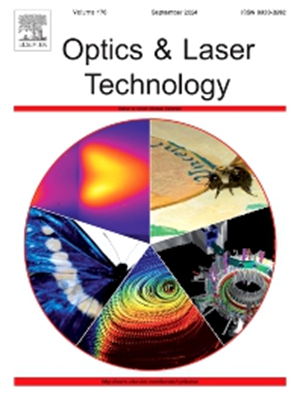IF 4.6
2区 物理与天体物理
Q1 OPTICS
引用次数: 0
摘要
红外成像在遥感、无人驾驶飞行器和安全监控等应用中发挥着举足轻重的作用。然而,目前的红外探测器分辨率较低,而且从硬件角度提高分辨率成本高昂。为了解决红外图像分辨率低、高频信息丢失严重等问题,本研究引入了一种轻量级神经网络模型。与现有的超分辨率模型相比,该模型的复杂度更低,便于边缘部署,可进行实时处理,从而扩展了红外成像的应用范围。这种方法采用了专门针对红外数据特性设计的新型架构,只需增加极少的参数就能显著提高图像的清晰度,因此适用于资源受限的实时应用。具体来说,我们设计了一个轻量级的多尺度特征提取模块,该模块利用各组不同内核大小的组卷积来实现高效的特征提取。此外,我们还引入了一个多尺度特征融合模块,它能自适应地整合从前面各层获取的特征。为了增强网络学习高频信息的能力,我们在网络中加入了傅立叶变换分支,并在损失函数中加入了频率损失函数。广泛的实验结果表明,与现有的轻量级超分辨率方法相比,我们提出的方法只需较少的参数就能实现卓越的性能。我们的代码见 https://github.com/clelevo/MSLRSR。本文章由计算机程序翻译,如有差异,请以英文原文为准。
Multi-scale large receptive field feature distillation network for lightweight infrared image super-resolution
Infrared imaging plays a pivotal role in applications such as remote sensing, unmanned aerial vehicles, and security surveillance. However, current infrared detectors have low resolution, and improving resolution from the hardware perspective is expensive. To address issues such as low resolution and significant loss of high-frequency information in infrared images, this study introduces a lightweight neural network model. Compared to existing super-resolution models, the proposed model exhibits lower complexity and is convenient for edge deployment, enabling real-time processing which extends the application scope of infrared imaging. This approach employs a novel architecture specially designed for the characteristics of infrared data, which significantly enhances the image clarity with a minimal increase in parameters, thereby making it suitable for resource-constrained real-time applications. Specifically, we design a lightweight multi-scale feature extraction module that utilizes group convolutions with varying kernel sizes across groups to realize efficient feature extraction. In addition, we introduce a multi-scale feature fusion module that adaptively integrates features harvested from preceding layers. To enhance the network’s ability to learn high-frequency information, we added a Fourier transform branch to the network and incorporated a frequency loss function into the loss function. Extensive experimental results demonstrate that our proposed approach achieves superior performance with fewer parameters compared to existing lightweight super-resolution methods. Our code is available at https://github.com/clelevo/MSLRSR.
求助全文
通过发布文献求助,成功后即可免费获取论文全文。
去求助
来源期刊
CiteScore
8.50
自引率
10.00%
发文量
1060
审稿时长
3.4 months
期刊介绍:
Optics & Laser Technology aims to provide a vehicle for the publication of a broad range of high quality research and review papers in those fields of scientific and engineering research appertaining to the development and application of the technology of optics and lasers. Papers describing original work in these areas are submitted to rigorous refereeing prior to acceptance for publication.
The scope of Optics & Laser Technology encompasses, but is not restricted to, the following areas:
•development in all types of lasers
•developments in optoelectronic devices and photonics
•developments in new photonics and optical concepts
•developments in conventional optics, optical instruments and components
•techniques of optical metrology, including interferometry and optical fibre sensors
•LIDAR and other non-contact optical measurement techniques, including optical methods in heat and fluid flow
•applications of lasers to materials processing, optical NDT display (including holography) and optical communication
•research and development in the field of laser safety including studies of hazards resulting from the applications of lasers (laser safety, hazards of laser fume)
•developments in optical computing and optical information processing
•developments in new optical materials
•developments in new optical characterization methods and techniques
•developments in quantum optics
•developments in light assisted micro and nanofabrication methods and techniques
•developments in nanophotonics and biophotonics
•developments in imaging processing and systems

 求助内容:
求助内容: 应助结果提醒方式:
应助结果提醒方式:


